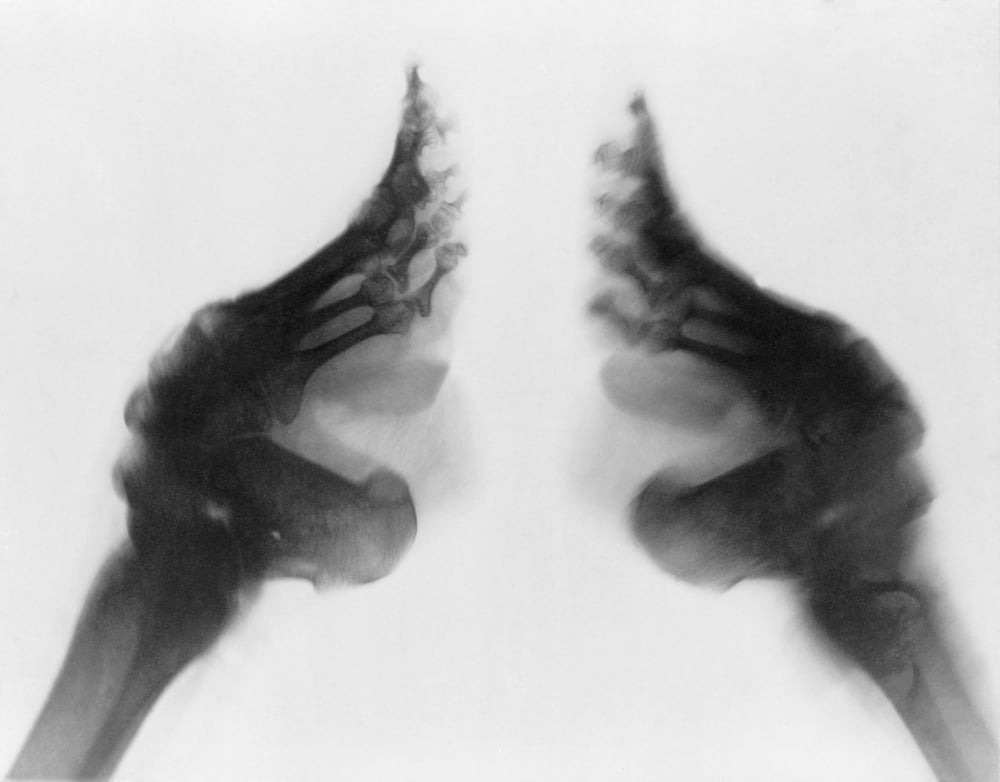Foot binding reflected social, economic, and cultural influences, transforming a physically harmful ritual into an unusual symbol of beauty.
In a small village in ancient China, a girl was born into a family that prided itself on tradition. As she grew older, the women in her family gathered to initiate the rite of foot binding, a practice they believed would guarantee her a prosperous marriage and honor the family.
With each wrap of the bandage, her toes curled closer to her heel, and even as tears welled in her eyes from the sharp pain, she dared not cry out, understanding the importance of this moment.
Over time, her steps became delicate and her movements more restrained, the golden lotus feet signifying her elevated status. Years later, her petite steps carried her through her husband’s household, her bound feet a silent testament to her family’s adherence to tradition. More viscerally, they are a personal reminder of her enduring sacrifice for beauty and acceptance in a culture that valued the appearance of small feet as the epitome of femininity and allure.

Recommended Video for you:
Foot Binding As A Cultural Paradox
Foot binding in ancient China stands as one of the most striking historical examples of beauty standards directly impacting physical form and function. To modern sensibilities, the practice often appears as a form of oppression, a stark manifestation of patriarchal control.
However, as with any complex social phenomenon, foot binding cannot be understood through a single lens. It requires an examination of the intricate interplay of social, economic, and cultural factors that turned a seemingly harmful practice into a revered symbol of beauty and desirability.

Origins Of Foot Binding: A Historical Enigma
The precise origins of foot binding are shrouded in the mists of Chinese history. The act of wrapping the feet of young girls to modify their size and shape likely gained prominence during the Song Dynasty (960–1279 AD), with documented references dating back to the 10th century.
The tale of Emperor Li Yu’s court dancer, Yao Niang, who bound her feet into the shape of a new moon, offers a mythical genesis for the practice. From this possibly apocryphal beginning, foot binding evolved from an elite predilection to a widespread custom that transcended social classes.
Cultural Symbolism: The Lotus In The Mud
In traditional Chinese culture, the bound foot was often likened to a lotus bud, a powerful symbol of purity and beauty arising unblemished from the murky waters of a pond. This imagery underscores the inherent contradictions of foot binding: a practice that caused pain and restricted movement, yet was simultaneously seen as a mark of elegance and allure.

Moreover, foot binding was imbued with erotic overtones. The small, bound foot—especially the “golden lotus” of a mere three inches—was a potent symbol of femininity. The peculiar gait it caused was thought to strengthen the thigh and pelvic muscles, thereby linking a woman’s desirability to her physical deformation.
By rendering women less able to move freely, foot binding also served as a method of enforcing traditional gender roles. It kept women confined to the domestic sphere, physically embodying the cultural values of submissiveness and dependence. A woman with bound feet was a woman controlled, her diminished capacity for movement reflecting her respected societal position.
For families, the practice of foot binding became a strategic investment in the future. In the marriage market, a small foot could increase a girl’s matrimonial prospects significantly, potentially allowing her to marry into a higher social class. This aspect of foot binding reveals the harsh economic realities and the commodification of women’s bodies within the ancient Chinese matrimonial system.
Socioeconomic Dimensions: Mobility, Class, And Labor
The implications of foot binding on labor, particularly for agricultural work, are complex. In southern China, women who did not bind their feet were more capable of participating in the demanding tasks of wet rice cultivation. In contrast, bound feet were feasible in the drier wheat fields of the north, though the modification often necessitated an adapted, seated method of labor.
This division of labor suggests that foot binding was more than a personal or familial choice—it was shaped by the agricultural economy of different regions.

Reports from travelers and political reformers highlight regional disparities in the practice of foot binding, with some areas, especially in the south, resisting the trend. This regional variation underscores the fact that foot binding was not monolithic; local customs, economic conditions, and social attitudes all influenced whether and how foot binding was practiced.
Ethnicity And Han Identity
It has been posited by scholars that during the Qing Dynasty, the Manchu rulers’ attempts to ban foot binding may have inadvertently made it a symbol of Han Chinese identity. This reaction against foreign rule shows how the practice of foot binding became intertwined with ethnic and national identities.
In modern times, foot binding has been condemned as a practice that was detrimental to women’s health and autonomy. The nationalist movements of the 20th century, seeking to forge a new identity for China, often highlighted foot binding as an emblem of the country’s “feudal” past—a remnant to be discarded in the march towards progress.
Conclusion
The paradox of foot binding lies in its multifaceted role as a symbol of both oppression and beauty. It was a practice deeply embedded in the social fabric of ancient China, reflecting and reinforcing the prevailing values and structures. While it may have started as a symbol of grace among court dancers, it evolved into a complex social signal with implications for gender roles, social status, and economic mobility.
References (click to expand)
- ProQuest | Better research, better learning, better insights..
- Cite - scholar.google.com
- The Shifting Meanings of Footbinding in Seventeenth-Century ....
- TURNER, C. L. (1997, December). Locating Footbinding: Variations across Class and Space in Nineteenth and Early Twentieth Century China*. Journal of Historical Sociology. Wiley.
- The "golden lotuses": bound feet.













